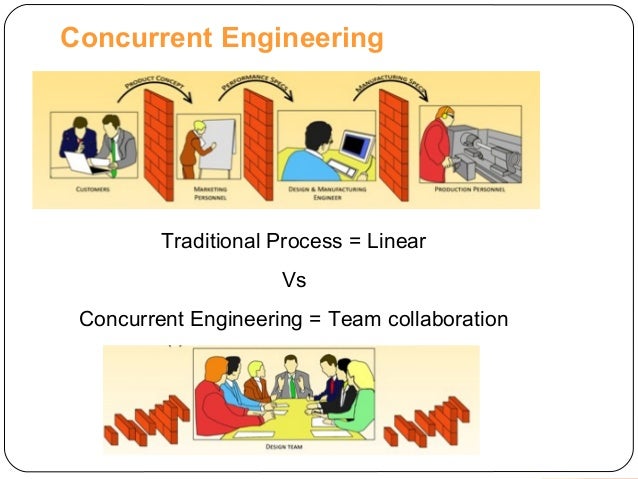Concurrent Engineering Design
The design using concurrent engineering design methods. These methods were validated in an IDA study by Winner [I] in the late- 1980s to be particularly adept at handling the difficulties to design presented by these limitations. A significant portion of the team's early efforts were aimed at establishing an. Engineering drawings, technical illustration, animation, and patent drawings. Documentation thus becomes a concurrent activity throughout the design process, instead. One of such strategies is the application of concurrent engineering principles to the design and construction works. This Chapter gives an overview of concurrent.
Photo by: AKS Concurrent engineering is a method by which several teams within an organization work simultaneously to develop new products and services. By engaging in multiple aspects of development concurrently, the amount of time involved in getting a new product to the market is decreased significantly. In markets where customers value time compression, fast-cycle developers have a distinct advantage. Additionally, in many high-technology areas such as electronics and telecommunications, product-technology performance is continuously increasing and price levels are dropping almost daily. In such areas, a firm's ability to sustain its competitive edge largely depends on the timely introduction of new or improved products and technologies.
More and more, the time parameter makes the difference between mere survival and substantial profit generation. Concurrent engineering is a key method for meeting this need of shortening a new product's time-to-market.
SEQUENTIAL NEW PRODUCT DEVELOPMENT In the past, commercial success was practically guaranteed for companies that could design, develop, and manufacture high-quality products that satisfied real needs at competitive prices. However, beginning in the early 1990s this traditional formula radically changed as time-to-market became a vital component of commercial success.
Concurrent Engineering Examples

Concurrent Engineering Process
Studies have demonstrated that being a few months late to market is much worse than having a 50 percent cost overrun when these overruns are related to financial performance over the lifecycle of a new product or service. In other words, time has become a key driver of competitive success, from design and development to the actual launch of a new product or service. Traditional project planning and execution has been marked by the definition of objectives and mile-stones. These goals are met through a progression of networked activities, some of which must be performed sequentially, others of which may be conducted in parallel. Planning techniques such as Program Evaluation and Review Technique (PERT), Graphical Evaluation and Review Technique (GERT), and Critical Path Method (CPM) have been used to support this sequencing of tasks and activities.
Comments are closed.